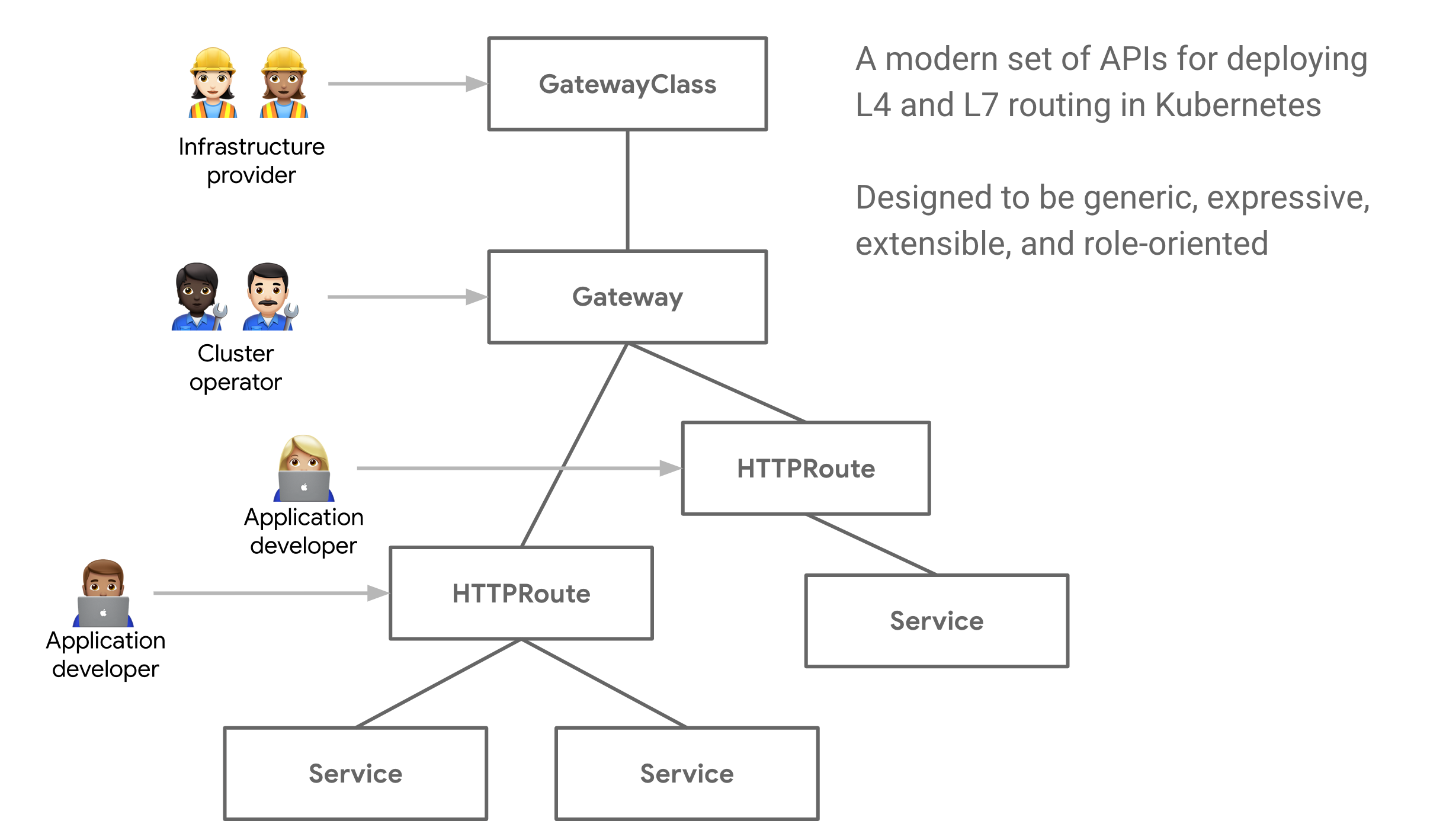Introduction
Gateway API is an open source project managed by the SIG-NETWORK community. The project's goal is to evolve service networking APIs within the Kubernetes ecosystem. Gateway API provide interfaces to expose Kubernetes applications - Services, Ingress, and more.
Note: This project was previously named "Service APIs" until being renamed to "Gateway API" in February 2021.
What is the goal of Gateway API?
Gateway API aims to improve service networking by providing expressive, extensible, role-oriented interfaces that are implemented by many vendors and have broad industry support.
Gateway API is a collection of API resources - Service, GatewayClass,
Gateway, HTTPRoute, TCPRoute, etc. Together these resources model a wide
variety of networking use-cases.

How do Gateway API improve upon current standards like Ingress?
- More expressive - They express more core functionality for things like header-based matching, traffic weighting, and other capabilities that were only possible in Ingress through custom means.
- More extensible - They allow for custom resources to be linked at various layers of the API. This allows for more granular customization at the appropriate places within the API structure.
- Role oriented - They are separated into different API resources that map to the common roles for running applications on Kubernetes.
- Generic - This isn't an improvement but rather something that should stay the same. Just as Ingress is a universal specification with numerous implementations, Gateway API are designed to be a portable specification supported by many implementations.
Some other notable capabilities include …
- Shared Gateways - They allow the sharing of load balancers and VIPs by permitting independent Route resources to bind to the same Gateway. This allows teams to share infrastructure safely without requiring direct coordination.
- Typed backend references - With typed backend references Routes can reference Kubernetes Services, but also any kind of Kubernetes resource that is designed to be a Gateway backend.
- Cross-Namespace references - Routes across different Namespaces can bind to Gateways. This allows for shared networking infrastructure despite Namespace segmentation for workloads.
- Classes - GatewayClasses formalize types of load balancing implementations. These classes make it easy and explicit for users to understand what kind of capabilities are available as a resource model itself.
Where to get started
To get started, please read through API overview. These documents give the necessary background to understand the API and the use-cases it targets. Once you have a good understanding of the API at a higher-level, please follow one of our guides to dive deeper into different parts of the API.
For a complete API reference, please refer to:
How to get involved
This project has many contributors, and we welcome anybody and everybody to get involved. Join our weekly meetings, file issues, or ask questions in Slack. No contribution is too small - even opinions matter!